Rio Tinto Minerals 2012 Sustainable Development Report

June 2013 riotintominerals.com Sustainable Development
Rio Tinto’s Asia Technology Center in Suzhou, China, was designed for LEED silver certification for energy efficiency and low environmental impact.


02 Message from the CEO 04 Business overview 06 Program overview 08 Social performance 10 Environmental performance 12 Economic performance 14 Case studies 17 Report assurances Contents 2012 Sustainable Development Report Table of contents June 2013
Our employees have proven their resiliency and dedication to RTM’s ongoing success, and I am proud of each person’s efforts in delivering strong results during a challenging period.
Responding and adapting
Rio Tinto Minerals delivered record earnings, reduced overhead costs and met our sustainability goals during a year of challenging global economic conditions.
Welcome to the Rio Tinto Minerals (RTM) 2012 sustainability report. In this report, you’ll discover how RTM performed as a business along with sustainability highlights covering a range of indicators from the areas of social, economic, and environmental performance.
RTM delivered a new record for earnings in 2012 and successfully faced many challenges. We also reduced our overhead costs by $7 million from the previous year. We should be proud of this achievement, despite a challenging economic environment, lower growth in China and continued weakness in Europe. To help compensate for these issues, we made a conscious decision to reduce borate production levels in order to minimize costs. This proved RTM’s ability to respond and adapt to difficult market conditions, while still providing a high level of reliability and the service our customers have come to expect.
Unfortunately, RTM had eleven reportable injuries in 2012, three more injuries than in 2011. Any reportable injury is too many, and the fact that we are trending upward from the prior year is of utmost concern. A concerted effort must be made to determine what factors might cause injury or illness to our people, with a goal of Zero Harm. A renewed emphasis on our Take 5 program, actively caring for our colleagues, and maintaining health and wellness are all tools we each have available to us to sustain a safe work environment.
Reduced borate production of 463,000 tonnes boric oxide equivalent in 2012 was eight percent lower than in 2011. This was reflective of global economic market conditions. The sale of Borax Argentina in August 2012 also contributed to the lower production figure. In spite of weakening market demand, RTM attained a one percent increase in refined borates revenues. We have also delivered $13.6 million in business improvements to lower costs.
The RTM Modified Direct Dissolving of Kernite (MDDK) project at Boron is a new ore processing system that will reduce mining costs and increase recoveries and saleable reserves. This $150 million capital investment is currently under construction and is scheduled for completion in 2014. Rio Tinto Minerals began its Sustainable Development program in 2001 to guide how it measures, improves and reports on social, environmental and economic performance. The company continuously works to reduce water, energy and greenhouse gas emissions. RTM also recognizes that the communities in which we live and work form a strong foundation for developing relationships and business partnerships. We have been networking with local communities for nearly 90 years and contribute more than $150 million to local economies annually.
Economic conditions will continue to be challenging in the coming year, and RTM will need to closely monitor costs to ensure the savings obtained in 2012 are sustainable in future years. Our employees have proven their resiliency and dedication to RTM’s ongoing success, and I am proud of each person’s efforts in delivering strong results during a challenging period. In the coming year, RTM’s long-term strategy will be strengthened by our strategic pillars, which include our continuing commitment to promoting a sustainable culture focused on health, safety and the environment.
Our ongoing sustainability efforts strongly contribute to our vision “To be the sector leading global industrial minerals supplier that creates better quality of life and sustainable value through our product offerings.”
Stay safe,
Xiaoling Liu President and Chief Executive Officer

2012 Sustainable Development Report Message from the CEO June 2013 2
We have a long tradition of sustainable development, creating value for our employees, communities, customers and shareholders

3
Minerals that make a difference
Rio Tinto Minerals is a world leader in industrial minerals supply and science. We mine and process borates and serve more than 1,000 direct customers worldwide. Our team of experts includes 1,200 people working at more than 12 facilities on four continents.
We supply over 30 percent of the global demand for refined borates from our mine in California – one of the richest deposits on the planet. The company’s founders began mining borates in 1872. The mule teams that hauled borates out of our original mines in Death Valley are long gone, but the symbol endures in our 20 Mule Team Borax® product brand.
Borates are naturally-occurring minerals containing boron and other elements. They are essential to life –plants need borates to grow – and part of a healthy diet for people. Borates are also key ingredients in a wide variety of products such as fiberglass, wood preservatives
and ceramics used to make homes safer and more energy efficient; heat-resistant glass used in flat-screen televisions and laptop computers; textile fiberglass used in sporting equipment and wind energy systems; and fertilizers that help growers increase crop quality and yield.
Rio Tinto Minerals is the acknowledged world leader in product quality, supply reliability and technical support – the services that create value for our customers and differentiate us from competitors. We are also industry leaders in continuously improving how our products and practices contribute to sustainable development.

2012 Sustainable Development Report Business overview June 2013 4
Rio
Asia Technology Center, Suzhou – Laboratory facility
Boron Operations – Primary borate mine and re neries
Changshu Operations – Shipping facility
Coudekerque Operations – Special re neries and shipping facility
Denver HQ – Global headquarters; laboratory facilities
Frankfurt Of ces – Regional center
Jadar Operations – Lithium-borate development project

Nules Operations – Shipping facility
Owens Lake Operations – Trona mine
Paddington Of ces – Regional center
Port Klang Operations – Shipping facility
Rotterdam Operations – Shipping facility
Singapore Of ces – Regional center
Wilmington Operations – Special re neries and shipping facility
5 2012 Sustainable Development Report Business overview June 2013 13 10 12
14
11
Tinto Minerals is a world leader in borates, with mines, processing plants, commercial and research facilities.
12 14
10
Contribution to sustainable development
Sustainable development is commonly defined as development that meets the needs of the present without compromising the ability of future generations to meet their own needs. While it cannot be achieved by one organization on its own, we believe that Rio Tinto Minerals can make an important contribution to the ongoing, global transition to sustainable development.
Contribution to sustainable development
Our commitment to social wellbeing, environmental stewardship and economic prosperity is supported by strong governance systems and provides the framework in which our business operates. Sustainable development considerations form an integral part of our business plans and decision-making processes. In turn, our reputation for acting responsibly plays a critical role in our success as a business and our ability to generate shareholder value.
Rio Tinto Minerals’ most important contributions to sustainable development are:
Social – Providing good jobs, good opportunities and a safe working environment for employees; and, engaging with neighbors to understand and address issues that affect our communities
Environmental – Minimizing our environmental footprint and maximizing the contribution our products make to the environment
Economic – Creating value for customers, shareholders, employees and economies
The organization’s sustainable development program focuses on measuring our performance in these areas, setting improvement targets and reporting our progress.
Mission
Rio Tinto Minerals’ sustainable development mission is to create value by considering the social, environmental and economic opportunities and risks associated with every aspect of our business:
Safety – to eliminate all occupational injuries and illnesses
Profitability – to promote the effective use of borate products and create competitive advantage for Rio Tinto Minerals
Improvement – to use resources efficiently and minimize the impact of operations on the environment; and, to find more efficient ways of working
Reputation – to generate positive perceptions and policies through stakeholder consultation; and, to conduct and communicate research that establishes the health, safety and environmental benefits of borates
Growth – To define and consider the social, environmental and economic aspects of every investment and procurement decision; and, to balance these aspects in developing new applications and technologies
People – To facilitate a culture of social responsibility and accountability
Framework
Our governance systems are based on The way we work, Rio Tinto’s global code of business conduct, requirements of local law and these guiding policies and programs:
• Rio Tinto Minerals’ Sustainability Policy
• Rio Tinto Minerals’ Employment Policy
• Rio Tinto Minerals’ Quality Policy
• External verification of health, safety, environment and quality management systems through ISO registration and compliance with Rio Tinto’s HSEQ management system
• Rio Tinto’s Business Resilience and Recovery Program –designed to designate and train employees to manage disasters with minimum impact to the business or its stakeholders
Visit www.riotinto.com to learn more about Rio Tinto’s global policies, standards, charters and accords.
Alignment
Sustainable development targets are ultimately realized by employees who stay informed about business priorities and performance through organizational strategy maps, monthly newsletters, quarterly business presentations and an annual Sustainable Development report, among other communications programs. Our performance management system helps align individual and organizational priorities. Each employee maintains a scorecard that links his or her actions with the organization’s key business objectives, including its sustainable development targets.
2012 Sustainable Development Report Program overview June 2013 6
Rio Tinto Minerals’ sustainable development mission is to create value by considering the social, environmental and economic opportunities and risks associated with every aspect of our business.
Sustainability principles
We balance the social, environmental and economic aspects of our business practices to improve how they contribute to sustainable development. Rio Tinto Minerals’ sustainability principles are:
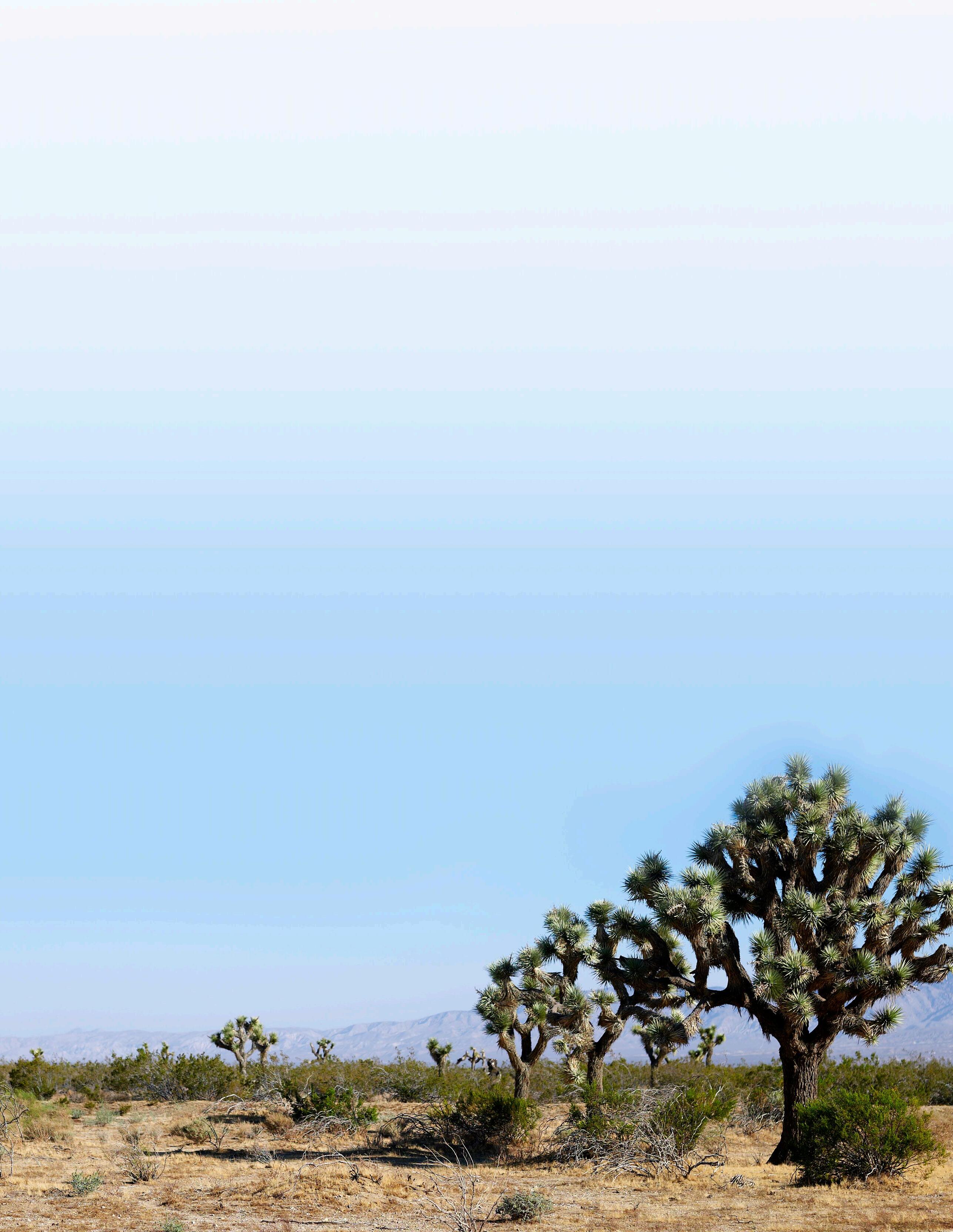
• Safety – we promote the health and safety of employees, contractors, neighbors and consumers through active caring
• Partnership – we seek to understand the issues that are important to our neighbors, and to make a lasting contribution to the communities in which we operate
• Stewardship – we work to minimize or mitigate our environmental impacts by using natural resources efficiently, preventing pollution, complying with applicable laws and regulations and continually improving our performance; similarly, we work to understand the full life cycle and safe use of our products
• Accountability – we conduct business in an accountable and transparent manner, relying on external auditing and reporting to understand and reflect our stakeholders’ interests
Employment principles
People are our most valuable resource. Our commitment to the highest standards of safety and social responsibility are expressed in The way we work. Rio Tinto Minerals’ employment principles are:
• Safety – we care about each other, our customers and our neighbors; creating a safe workplace and safe products is everyone’s responsibility
• Communication – we value candid communication and a collaborative approach to understanding and solving problems
• Compensation – we attract, motivate and retain capable employees by offering competitive compensation and development opportunities
• Diversity – we believe our cultural diversity make us stronger in our workplace and the marketplace; we are an equal opportunity employer
• Integrity – we are committed to ethical behavior and business practices; our work environment promotes integrity and accountability
• Learning – we consider learning and growth to be the mutual responsibility of individuals and the organization
• Performance – we link individual and collective goals to improve our business performance; we encourage creativity and innovation
Quality principles
We supply quality products, services and solutions that consistently meet our customers’ needs. Continual improvement in every aspect of our business is our way of life. Rio Tinto Minerals’ quality principles are:
• Measurement – we monitor markets and customers’ requirements to improve the service we deliver, and to protect the long-term value of the business
• Improvement – we provide the necessary resources and systems to improve our business processes, and to ensure that the quality of our products meets accepted standards
• Development – we foster learning to develop our ability to identify and meet the needs of current and prospective customers
• Value creation – we promote a culture of technical excellence, innovation and financial rigor to create value for our internal and external stakeholders
7
2012 Sustainable Development Report Program overview June 2013
Principles
Our number one goal is for employees to return home safely to their families each and every day.
People who make a difference
One of our key areas of focus is to offer a safe and healthy work environment for our employees, where their rights are upheld and dignity respected.
People who make a difference
We strive to create lasting partnerships with our neighboring communities by demonstrating mutual respect and a commitment to long term, active engagement. Building trust among our employees and communities is vital to achieving mutually beneficial relationships.
Safety and health
Our number one goal is for employees to return home safely to their families each and every day. Through collaboration and teamwork, we continue to move forward on our safety journey toward a Sustainable Safety, Health, Environment and Quality Culture. By doing so, employees and contractors receive the tools necessary to work safely, alongside managers who demonstrate leadership and a commitment to safety.
Workplace practices
With a commitment to respect and honor diversity in the workplace, we continue to foster safe and efficient workplace practices throughout the organization. We attract and retain a skilled workforce, the cornerstone of our success, by being transparent, equitable, and offering competitive compensation packages.
Communities
Strong community relations are critical to our operating success. By cultivating positive relationships with our neighboring communities, we strive to decrease negative impacts and increase mutually beneficial opportunities for the community as well as the organization. We actively engage with community representatives and local governments to address any issues, understand obligations and focus on productive outcomes.
Product stewardship
Rio Tinto Minerals has a team of specialists who continuously innovate and work to refine and improve the application of our products in today’s world. By advancing research on the safe use of borates, securing product registrations, and protecting products from unnecessary restrictions, we maximize our capacity for innovation and set the standard for the production and distribution of this important resource.

RTM Safety Performance 2007 - 2012
(Includes information from divested assets when under RTM management)
8 2012 Sustainable Development Report Social performance June 2013
0.9 0.8 0.7 0.6 0.5 0.4 0.3 0.2 0.1 0 2007 2008 2009 2010 2011 2012
Lost time injury frequency rate (LTIFR) is the rate of lost time injuries per 200,000 man hours worked All injury frequency rate (AIFR) is the rate of all injuries that require medical treatment per 200,000 man hours worked #1
Sponsor

9 2012 Sustainable Development Report Social performance June 2013
performance Metric 2012 target 2012 performance 2013 target Lost time injury frequency rate (LTIFR) is the rate of lost time injuries per 200,000 man hours worked All injury frequency rate (AIFR) is the rate of all injuries that require medical treatment per 200,000 man hours worked Creating a Sustainable Culture Community consultation Environmental and health research on products and processes 0.21 0.42 Incorporate environmental goals into Sustainable Culture training
social risk analyses at major sites
research
of products’ HSE effects and benefits 0.18 0.61 Met target Met target Met target 0.18 0.61
environmental goals into Sustainable Culture training
Social
Conduct
Sponsor
projects to advance understanding
Incorporate
Conduct social risk analyses at major sites
HSE
research projects to advance understanding of products’
effects and benefits
Practices that make a difference
At our operations, we reduce the water and energy we use, lower our emissions and restore land to its natural state.
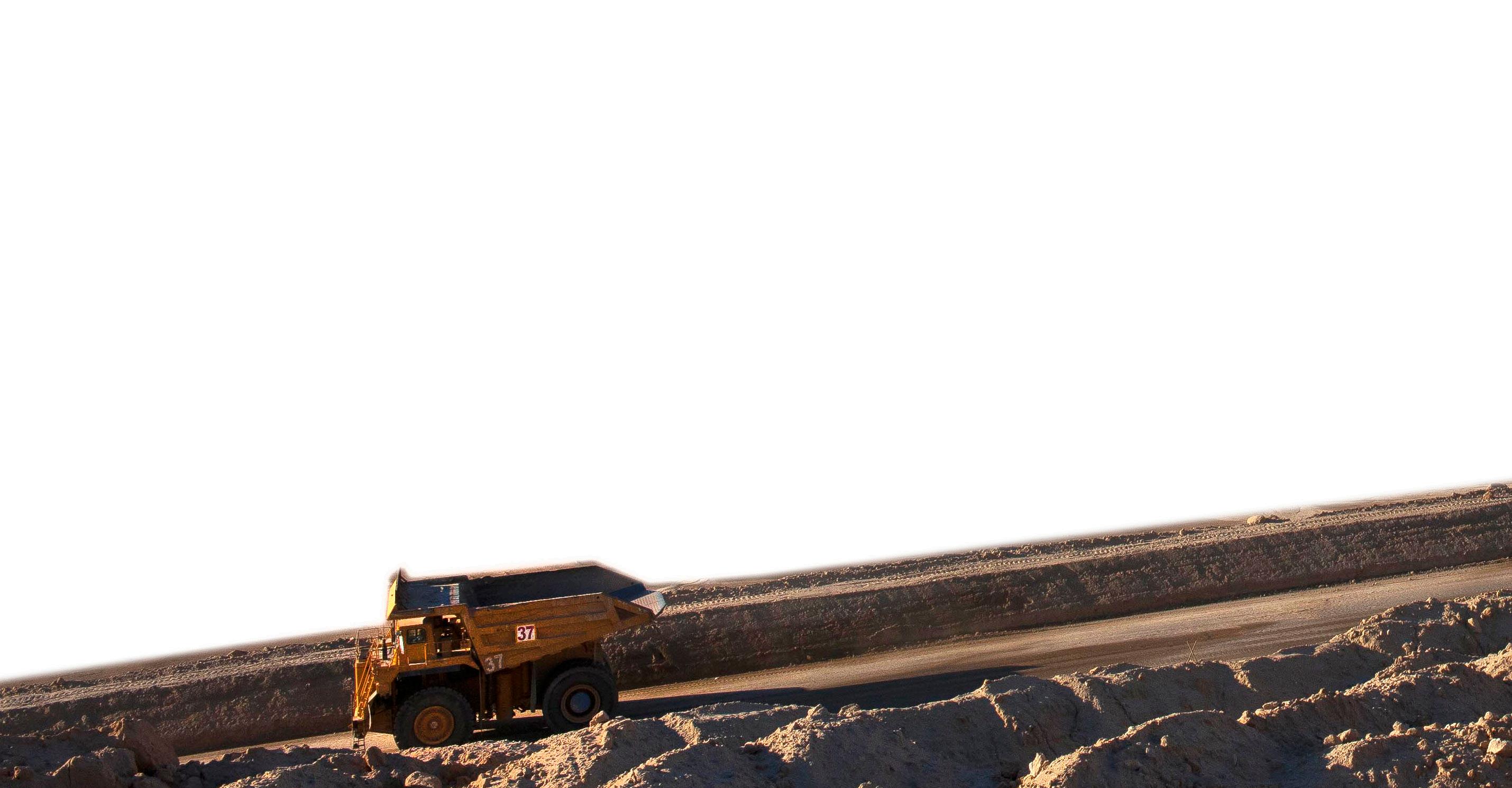
Practices that make a difference
Respect for the environment is central to our approach to sustainable development. Wherever possible we prevent – or otherwise minimize, mitigate and remediate – harmful effects of Rio Tinto Minerals’ operations on air, water, land and biodiversity. We rely on environmental experts, regulators and our communities to inform our management systems and conduct regular audits to ensure they are fit for purpose and being implemented consistently. Five year targets were established in early 2009, using 2008 as our baseline, to monitor progress. These targets set a 2 percent reduction goal in the areas of greenhouse gas emissions, energy use, and fresh water usage. While meeting our targets has been a challenge, management strategies are now in place to bring us closer to reaching our goals by 2013.
Energy and emissions
Our operations require energy to move ore and waste and to refine products. Lowering our energy use and emissions are critical goals, and we invest in more efficient equipment and practices to meet our reduction targets. We also promote borates’ use in wind and solar energy systems, biofuel production, and energy-efficient building and industrial processes.
Land and biodiversity
Rio Tinto Minerals focuses on ensuring sustainable stewardship of the land we own, lease or manage, and protecting biodiversity, or the wide variety of animals, plants, micro-organisms and ecosystems on our land holdings. Our goal is to have a net zero impact on biodiversity which requires us to understand and minimize our operations’ impact, and to contribute to biodiversity conservation to ensure the region ultimately benefits from our presence.
Water use
Access to water is critical to our operations and we use water at every stage of our business. Some of our operations are located in water-scarce environments where they compete with other users, while other operations need to manage surplus water from storms or groundwater. As a result, each of our operations implements a site-specific water strategy to reduce fresh water use and safeguard the region’s and community’s water supply.
Waste
We generate waste during our mining and processing operations, and our waste management programs focus on limiting the negative environmental impact of our activities and reducing our operating costs and risks. We have established procedures to reduce, reuse and recycle waste produced at each of our global operations and offices. Effectively managing our waste supports improved environmental performance as well as our biodiversity and water programs.
2012 Sustainable Development Report Environmental performance June 2013
0.0090 0.0080 0.0070 0.0060 0.0050 0.0040 0.0030 0.0020 0.0010 0.0000 Borates fresh water usage (ML/tonne) 2008 2009 2010 2011 2012 2013 Target 10
Environmental performance
GHG emission reductions
Energy
Make progress toward 2013 target (2% reduction per tonne of product)
GHG emissions per tonne of product were marginally higher in 2012 as a result of lower production. On target to meet 2013 goal.
Make progress toward 2013 target (2% reduction per tonne of product)
Water
Regulatory violations
ISO 14001 certification of environmental Management System
Make progress toward 2013 target (2% reduction per tonne of product)
Make progress toward 2013 target (2% reduction per tonne of product)
Zero violations
Achieve compliance with HSEQ management system
Energy intensity decreased by 6% from 2010 levels. On target to meet 2013 goal
Water use decreased by 22% from 2010 levels. More strategy needed to meet 2013 target
One violation
Met target
Make progress toward 2013 target (2% reduction per tonne of product)
Make progress toward 2013 target (2% reduction per tonne of product)

Zero violations
Continued certification/ conformance with HSEQ management system
2012 Sustainable Development Report Environmental performance June 2013
Metric 2012 target 2012 performance 2013 target
use reductions
use reductions
16.00 14.00 12.00 10.00 8.00 6.00 4.00 2.00 0.00 2008 2009 2010 2011 2012 2013 Target Borates Energy Use Intensity (GJ/t B2O3) 0.680 0.660 0.640 0.620 0.600 0.580 0.560 0.540 0.520 0.500 Borates GHG Emissions Intensity (CO2 / t B2O3) 2008 2009 2010 2011 2012 2013 Target 11
In 2012, we progressed initiatives to increase efficiency and capacity at our operations, in our supply chain, and across functional departments, capturing sustainable cost savings of $24.8 million.
Solutions that make a difference
Our business creates value through the products we make, the jobs we support and our contribution to local economies.
Solutions that make a difference
Sustainable development is underpinned by sustainable economies. Our ability to create value is based on our ability to deliver products and services our customers need, and to secure access to land, people and capital. We use our social, environmental, economic and commercial expertise to harness resources and create prosperity for our employees, customers, communities, governments and business partners.
Economic contribution
Borates production of 463,000 tones boric oxide equivalent was eight percent lower than in 2011, reflecting current global economic market conditions. The sale of Borax Argentina, which historically contributed around four percent of RTM’s borates production, completed in August 2012. Despite a weakening in demand during the year, RTM achieve a one percent improvement in refined borates revenues. Earnings of US$140 million were six percent higher than 2011, excluding the contribution from talc in the prior period.

Differentiation
Rio Tinto Minerals shapes its product and service offering to meet demand growth associated with key socioeconomic trends. These include energy efficiency in housing and transportation, urbanization in emerging economies and sustainable farming practices. Segmentation and pricing strategies are in place to support shifts between regions and end use sectors through different consumer and economic cycles. We also strive to enhance differentiation through supply reliability and flexibility to capture growth in promising regions.
Business improvement
We have a long tradition of continuous improvement, and we track sustainable cost savings and revenue enhancements through our Business Improvement Program. In 2012, we progressed initiatives to increase efficiency and capacity at our operations, in our supply chain, and across functional departments, capturing sustainable cost savings of $24.8 million.
Growth
Exploration drilling in Serbia resulted in expanded deposit boundaries at Jadar, a promising new lithium and borate development project with considerable economic potential. The deposit is one of the largest undeveloped lithium deposits in the world.
Business improvement value delivered
2012 Sustainable Development Report Economic performance June 2013
*With the divestment of Argentina in 2012, savings are through Q2 2012.
US$m 18 16 14 12 10 8 6 4 2 0 2010 2011 2012 Boron Operations
12 Wilmington Operations *Argentina Operations Coudekerque Operations Supply Chain & Logistics Total BI Sustaining Savings
Refined borates are used in hundreds of products and processes. They are a vital ingredient of many home and automotive applications and are essential nutrients for crops. They are commonly used in glass and ceramic applications, including fiberglass, television screens, floor and wall tiles, and heat-resistant glass.
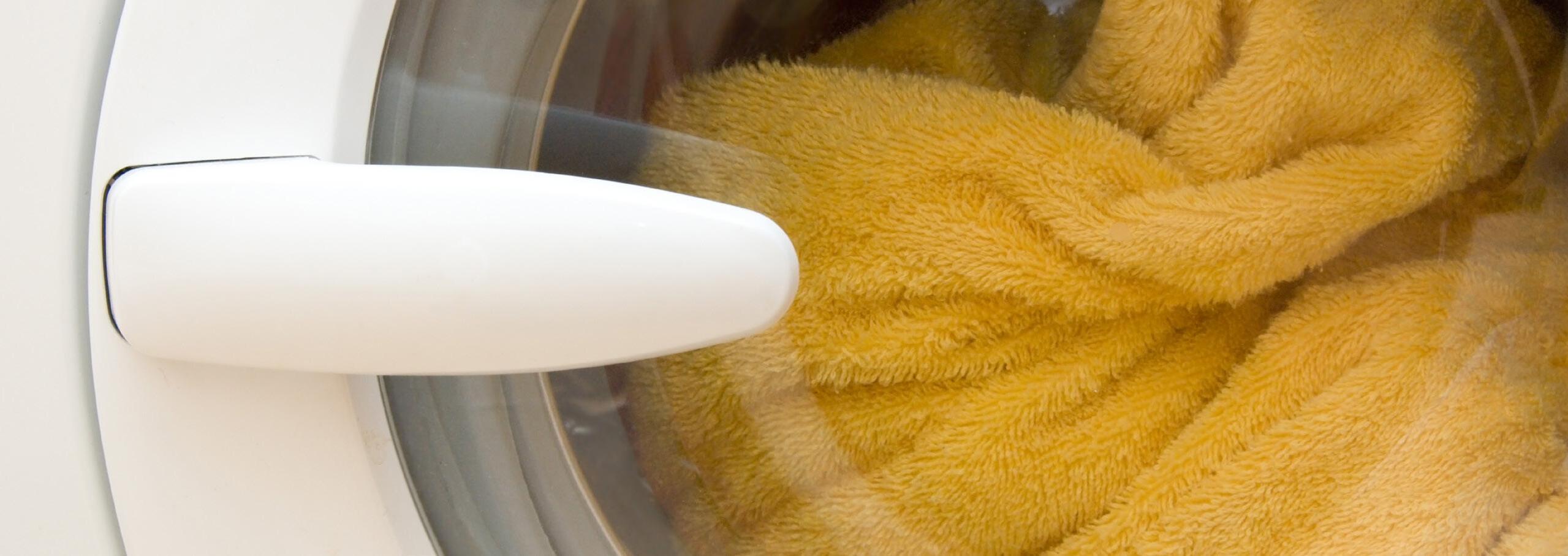
Capture sustainability savings
Describe SD impacts of all capital investment proposals; detailed assessments for all projects >$2M
Assess R & D projects for positive and negative impacts
Continue to identify opportunities for joint development with customers
Capture sustainability savings
Describe SD impacts of all capital investment proposal; detailed assessments for all projects>$2M
Assess R & D projects for positive and negative impacts
13 2012 Sustainable Development Report Economic performance June 2013
Economic performance Metric 2012 target 2012 performance 2013 target Earnings Customer relationships Business improvement
Research
Achieve earnings target
Capital investment
& Development
Implement partnerships with three key customers
Exceeded target Met target Met target Met target Met target Achieve earnings target
Case Studies
Asia Technology Center
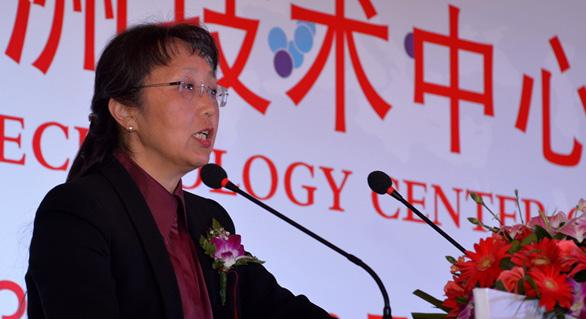
As part of the Rio Tinto Group, Rio Tinto Minerals’ Asia Technology Center (ATC) is pursuing innovation to address the world’s demand for energy, food and urbanization. The ATC is designed to support customers and develop new products and technologies in the world’s premier growth region. The ATC has technical capacities in Singapore, China and India.
The ATC is a standalone laboratory, designed to grow, and connected to our sister company on site and remotely to our Research & Development commercial centers throughout the world. The facility is designed for LEED silver certification for energy efficiency and low environmental impact. Laboratory construction commenced in March 2012, completed in November 2012, and had no lost time injuries in 126,000 man hours of work.
ATC Laboratory Facts
• Has footprint of 950m2
• Designed for LEED silver certification for energy efficiency and low environmental impact
• Constructed and delivered with no lost time injuries in 126,000 man hours of work
• Equipped for developing new products and applications involving borates and, in the future, lithium carbonate and other minerals

• Most building products were sourced from Chinese suppliers, many from our own customers

• Designed for safety and collaborative and creative work environment

RTM Nules Supports Health, Culture and Education in Local Community
Rio Tinto Minerals in Nules, Spain, collaborated with the local community, including the town of Nules and Castellon University, and supported activities that promoted health, culture and education. RTM also provided scientific assistance for the ceramic market in the area.
RTM Nules sponsored sports clubs such as futsal (a variation of football that is primarily played indoors), handball and football, as well as circuit races that were held at the beach, and in the city and mountains.
The company also supports local health, cultural and educational events with community stakeholders. This includes celebrating “Fallas,” a traditional popular festival held in March, with senior citizens. RTM also participates in events held by the Spanish Association Against Cancer, including melanoma testing and briefings to prevent urological diseases. In addition, RTM Nules employees devote volunteer hours to help the Nules Delegation of the Spanish Red Cross.
The company held a total of ten sustainability-focused activities during the year.

2012 Sustainable Development Report Case Studies June 2013
14
A Partnership to Protect Paulje’s Cultural Heritage

Rio Tinto and the Jadar Museum partner to conserve and protect Bronze Age artifacts in western Serbia

Rio Tinto and Project C.U.R.E - Mongolia

Rio Tinto in Mongolia is working in partnership with the Denver-based international nonprofit, Project C.U.R.E, to help bring much needed medical supplies to Mongolia as part of its commitment to contributing to social investment. PROJECT C.U.R.E. is a nonprofit, humanitarian relief organization that delivers donated medical supplies, equipment and services to medical professionals and the patients under their care in developing countries.
At the dawn of Central Europe’s Bronze Age in 2000 BC, the Jadar River Valley in Western Serbia is believed to have been among the few sources of tin in the world. Tin is essential to the production of bronze, which at the time was revolutionizing agriculture, warfare and power dynamics between cultures. The advent of bronze led to the first urbanized civilizations, and thus bronze smelted with tin from the Jadar River Valley was a catalyst for social and economic change across the region.
Now, 4000 years later, the Jadar Valley is once again poised on the cusp of notoriety because of the unique mineral that Rio Tinto has found there. In 2004 Rio Tinto geologists extracted cores samples that were dotted with small rounded nodules, unlike any known mineral. They named the new find Jadarite. After extensive analysis, two elements were isolated: lithium and borates, which are used to produce revolutionary new glass, ceramics and energy technology.
Jadarite has the potential to supercharge Serbia’s economy, contributing to a “green,” modern and knowledge-based future. But before this can happen, before even exploration could commence, Rio Tinto knew that the exploration sites were rich in history that had to be catalogued and protected. To do this, archeologists from Belgrade University and the Jadar Museum were embedded on the team, and in November 2010, Rio Tinto provided a €50,000 research grant to the Jadar Museum to excavate and conserve Bronze Age tombs called tumular necropolis at the Paulje site near where the jadarite deposit is found.
By studying the construction and contents of the tumuli, Museum archaeologists funded under the ambitious five-year effort are gleaning insights into the civilization, social hierarchy, organization and culture of the people who inhabited the Jadar Valley 4000 years ago. Most tumuli served as burial sites for more than one person, possibly whole families. The burial ritual generally consisted of cremation, after which the ashes and remains of the pyre were deposited in the grave with ornaments, jewelry, weapons, vessels and other personal belongings, and covered with earth. In one tumulus, archaeologists found a 115 cm bronze pin beside a skeleton, the only deceased who was not cremated.
In 2012, Jadar Museum archaeologists Rada Gligoric and Jagoda CanicTesanovic completed excavation of three tumuli in Paulje, just as the first artifacts were returned from Belgrade after being catalogued and conserved by expert archeologists. Jewelry made of bronze and amber, pottery vessels, bronze weapons and other artifacts are now displayed at the Jadar Museum, telling a story about the society and community that lived in the Jadar Valley. The Museum is already planning to exhibit the Paulje treasures in cities across Serbia including Krusevac, Gornji Milanovac, Sabac and Pancevo.
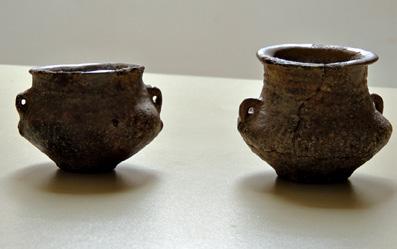

Rio Tinto and the Jadar Museum are together preserving and protecting Serbia’s cultural heritage. Bronze Age artifacts from Paulje attest to the large and vibrant community that lived in the Jadar Valley and which shaped the region’s society. This region, now Serbia, was a catalyst for change in the Bronze Age, and now 4000 years later, is poised to reclaim a mining legacy associated with innovation that contributes to modern living and influences society and culture creating wealth and opportunity.
In September 2011, Project C.U.R.E. held its annual fundraiser to honor and welcome Her Excellency, Mrs. Bolormaa Khajidsuren, the First Lady of Mongolia, to Denver. The major fundraising event was attended by over 1,800 delegates and sponsored by Rio Tinto, which manages the Oyu Tolgoi mine in the South Gobi. At the event, the First Lady highlighted the health issues in Mongolia and raised awareness of the difference the delegates’ efforts and donations could make to international healthcare. Alison Kuttler, Rio Tinto Vice President of External Affairs, spoke on Rio Tinto’s behalf.
US$2 million was raised at the event, which Project C.U.R.E. has used to provide medical relief (in the form of medical supplies) for delivery to Mongolia. These medical supplies will arrived in late 2012, at which time executives from Rio Tinto, representatives of Project C.U.R.E, and the First Lady of Mongolia unloaded the container and delivered the supplies by hand to select hospitals and medical centers.
Rio Tinto in Mongolia requested Rio Tinto Marine to provide logistical and shipping expertise and support to Project C.U.R.E. in order to make sure the medical supplies – originating in Denver and bound for Mongolia’s capital, Ulaanbaatar – were delivered safely and timely.
2012 Sustainable Development Report Case Studies June 2013 14
Case Studies
Boron’s Emergency Rescue Team Takes Top Honors

Ongoing development of a highly skilled team is critical. In 2011, six members went to rescue competitions to observe and share learning’s with the remainder of the team. A competition team was then formed in 2012, with ten members competing in the Safety Olympiad in Elko, Nevada. The team successfully competed against several other mine rescue teams from other states, earning first place in the Retention Practical Station, third place in the Written Test Practical Station and another third place award for B Flight in the Field Portion. In 2013, two teams will attend the Safety Olympiad in Elko, Nevada, where the top performing team will then join the International Surface Mine Rescue competition in Gillette, Wyoming. The three current teams each have an assigned captain and co-captain, and teams train for eight hours every month. Classes are up to a week long, with members required to attend. Annual retraining also is mandatory in order to refresh skills and maintain qualifications.

Camp KEEP is a five-day residential environmental education program designed specifically for Kern County’s fifth and sixth grade students.
Boron Operations’ Emergency Response Team was established in 1999 and included approximately 40 members who trained once a month. The Emergency Response Team now has 33 voluntary members who are expert in high angle/confined space rescue, hazardous materials response, incident management and advanced emergency medical treatment. In 2012, the team also made two capital purchases. Out-of-date equipment was replaced with new, and a new firefighting response truck with a foam system was added.
The Emergency Response Team has developed immensely since its inception. Competition gives team members the opportunity experience real life simulations, testing team members’ skills and preparing them for situations that could occur at the mine-site. The goal is for each member to increase their skillset and to be seen as leaders in the organization, caring for others and being ready to handle any rescue situation that may arise.
Boron Supports Community with Recycling Program
Recycling takes on new meaning when it benefits the community. Boron Operations has been recycling soda cans and plastic bottles in order to generate a small revenue stream that is donated to the community’s “Camp KEEP” (Kern Environmental Education Program). This program helps students become more of aware of the environment and how it is impacted by our actions.
Camp KEEP is a five-day residential environmental education program designed specifically for Kern County’s fifth and sixth grade students. It has two campuses that serve over 7,000 students each year. KEEP staff also host and serve the visually and orthopedically handicapped, deaf and hard-of-hearing, as well as children and adults with mental disabilities.
In addition, segregating and recycling used cardboard also generates revenue that is provided to BARC (Bakersfield ARC), another local nonprofit organization that provides job training, employment and support services for the developmentally disabled and their families.
By partnering with local community organizations, Boron Operations provides some financial support and also helps to provide young minds with vital education on the importance of taking care of the environment for future generations.
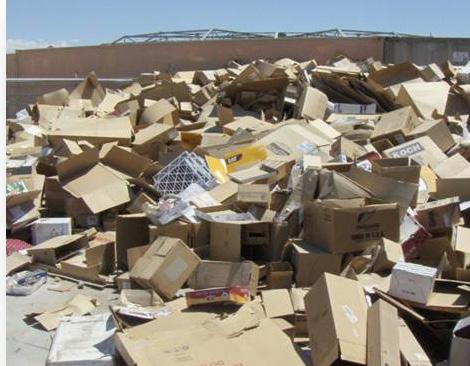
16 2012 Sustainable Development Report Case Studies June 2013
(continued)
Report assurances
For this report, data are generated by senior managers and approved by Rio Tinto Minerals’ Executive Team. These data are also subject to the following audit procedures:
Social
Health and safety programs and practices are audited by local, regional and national regulatory agencies. In addition, Rio Tinto Minerals and Rio Tinto conduct internal audits of health and safety programs, judging them against standards developed to meet or exceed local regulatory requirements. Findings are monitored through a biannual reporting program to assure timely completion of any corrective actions.
Environmental
Rio Tinto Minerals maintains external certification of its environmental management systems through ISO 14000 series registration at each of its operations. Rio Tinto Minerals’ environmental programs and practices are also audited by regional and national government agencies. Finally, the organization conducts internal audits of its environmental practices, measuring its performance against environmental standards developed by Rio Tinto.
Economic
Rio Tinto Minerals’ financial records are subject to annual external audit by PricewaterhouseCoopers. Ernst & Young are engaged to conduct a program of internal audits on an ongoing basis to ensure that the organization’s policies and procedures meet high standards. Rio Tinto Minerals is also compliant with Section 404 of the Sarbanes-Oxley Act, passed by the United States Congress in 2002 to add rigor to corporate reporting practices. The Act requires management to assess internal control over financial reporting, report on the assessment, and subject that assessment to external audit.
Rio Tinto Minerals did not subject its 2012 Sustainable Development Report to independent auditing. More information on internal policies and external auditing practices to guarantee the accuracy, completeness and reliability of these data are presented throughout this report.
2012 Sustainable Development Report Report Assurances
17
Rio Tinto Minerals
8051 E. Maplewood Avenue Building 4
Greenwood Village, CO 80111 USA
T +1 303 713 5000
riotintominerals.com
For more information or to share feedback, please contact:
Florence Yaeger Communications Manager, Communications & External Affairs florence.yaeger@riotinto.com
©2013, Rio Tinto Minerals




























